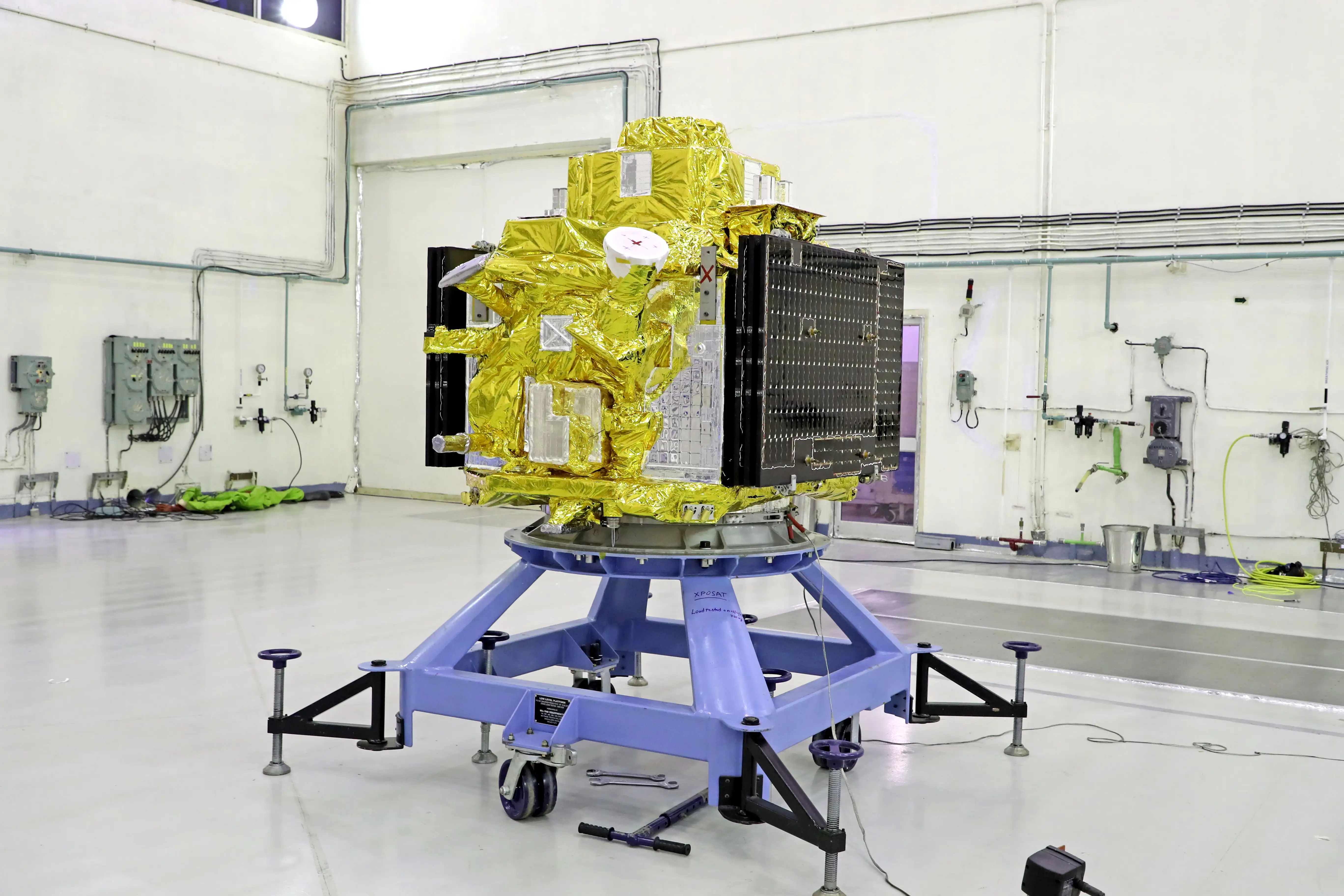ISRO will launch an X-ray astronomy satellite to study exotic astronomical objects.
- Karthik Naren
- Dec 31, 2023
- 4 min read
PSLV-C58 will launch XPoSat into orbit on January 1, 2024

ISRO – Indian Space Research Organisation – will launch the PSLV-DL C58 rocket with the XPoSat astronomy satellite on January 1, 2024, with liftoff time at 03:40 UTC (09:10 IST) from the First Launch Pad in Satish Dhawan Space Centre, Sriharikota.

XPoSat (X-ray Polarimeter Satellite), with a total mass of 480 kg, is India's first polarimetry mission to study various dynamics of bright astronomical X-ray sources in extreme conditions.
The POLIX (Polarimeter Instrument in X-rays) primary payload will measure polarimetry parameters (degree and angle of polarization) in the average X-ray energy range of 8-30 keV photons of astronomical origin. The XSPECT (X-ray Spectroscopy and Timing) payload will collect spectroscopic information in the 0.8-15 keV energy range. The XPosat was built on a modified IMS-2 satellite chassis.
The emission mechanism of various astronomical sources, such as black holes, neutron stars, active galactic nuclei, pulsar wind nebulae, etc., originate from complex physical processes. While the time-informed spectroscopic study by various space observatories offers a wealth of information, the exact nature of emission from such sources still poses deeper challenges for astronomers. Polarimetry measurements add two more dimensions to understanding – the degree of polarization and the angle of polarization – and are therefore an excellent diagnostic tool for understanding the emission processes of astronomical sources. Polarimetric observations together with spectroscopic observations will reshape several theoretical models of astronomical emission processes. This will be the main direction of research by the Indian scientific community.

XPoSat payloads:
The spacecraft will carry two scientific payloads. The primary payload POLIX (Polarimeter Instrument in X-rays) will measure the polarimetry parameters (degree and angle of polarization) in medium energy X-ray photons range of 8-30 keV of astronomical origin. XSPECT (X-ray Spectroscopy and Timing) will collect spectroscopic information in the 0.8-15 KeV energy range.

POLIX, a 125 kg instrument, is an X-ray polarimeter for astronomical observations at 8-30keV developed by Ramam Research Institute (RRI), Bangalore in collaboration with UR Rao Satellite Center (URSC). The instrument is composed of a collimator, a scatterer, and four proportional X-ray counters that surround the scatterer. The scatterer is made of low atomic mass material that causes anisotropic Thomson scattering of incoming polarized X-rays. The collimator restricts the field of view to 3 degrees x 3 degrees, so that there is only one bright source in the field of view for most observations. POLIX is expected to observe about forty bright astronomical sources of different categories during the XPoSat mission's planned lifetime of about 5 years. This is the first payload in the X-ray medium energy band dedicated to polarimetry.

The secondary payload is XSPECT (X-ray Spectroscopy and Timing), which will collect soft X-ray spectroscopic information in the 0.8-15 keV energy range. The instrument will observe various types of sources, such as X-ray pulsars, binary black holes, low magnetic field (NS) neutron stars in LMXBs, AGNs, and magnetars.
Taking advantage of the long-term observations required by POLIX to measure X-ray polarization, XSPECT can provide long-term monitoring of the spectral state in continuous emission, simultaneous changes in flux and line profile, and long-term temporal monitoring of the emission. of soft X-rays in the X-ray energy range of 0.8-15 KeV. A number of swept charging devices (SCDs) offer an effective area >30 cm2 at 6 keV with an energy resolution better than 200 eV at 5.9 keV. Passive collimators are used to reduce background by narrowing the field of view with a time resolution of approximately 2 ms.
The instrument is configured as two detector packages connected to a single electronics package, which powers the detectors and performs the necessary signal conditioning and interfacing with the spacecraft. Two different field of view (FOV) collimators, 2°X 2° and 3°X 3°, are used, allowing us to efficiently model the X-ray sky background.

PSLV DL rocket
The PSLV, the 44-meter-long vehicle with a maximum takeoff mass of 240 tons, is configured as a four-stage alternating rocket of solid and liquid propulsion. The first stage carries 139 tons of solid propellant, which is augmented by two solid propellant boosters. The second stage uses the indigenously developed Vikas engine and carries 40 tonnes of liquid propellant. The third stage is a 7-ton solid engine encased in a composite case, while the fourth is liquid propellant with a dual-engine configuration carrying 2 tons. The satellite is housed on a payload adapter module and is protected during the atmospheric ascent phase by a 3.2-meter diameter head fairing. The PSLV-DL variant has only two boosters with a propellant load of 12 tons. PSLV-C44, on January 24, 2019, was the first flight to use the PSLV-DL variant. It is capable of launching 1,257 kg to 600 km in a Sun-synchronous orbit.
Experimental Missions(POEM-3) on PSLV-C58

Following XPoSat's injection into a 650km, 6-degree orbit, the PS4 stage is set to undergo a significant orbit change by lowering to a 350km, ~9.6-degree orbit through two restarts of the PS4 engines. This maneuver serves as preparation for upcoming atmosphere re-entry experiments, with the remaining propellant in the PS4 being safely disposed of through controlled releases of oxidizer and fuel. The passivation process includes venting tank pressure, and post-passivation, control of the stage is handed over to the POEM Avionics system. The PS4 stage, configured as a 3-axis stabilized Orbital Platform, is designed to space-qualify systems and conduct experiments. Its electrical power needs are met by flexible solar panels and a 50Ah Li-Ion battery in a tied configuration. Avionic systems manage navigation, guidance, control, and telecommands, while an Orbital Platform Attitude Control System ensures precise control for payload testing.
List of Static Payloads on POEM-3

Mission Timeline

LIVE













Comments